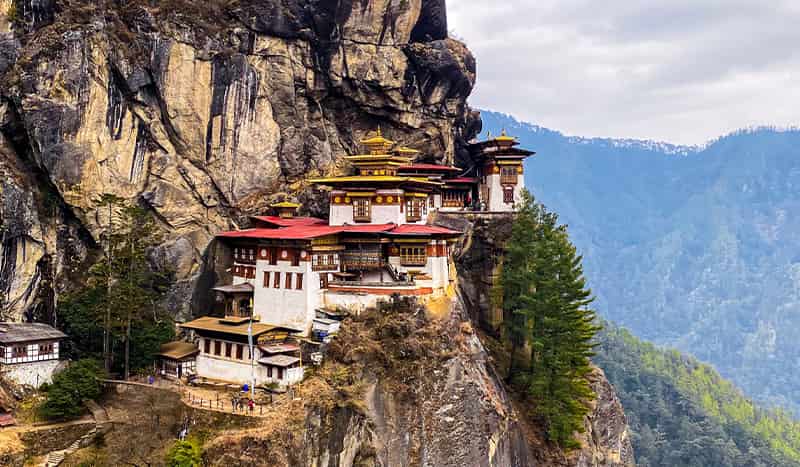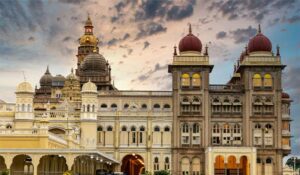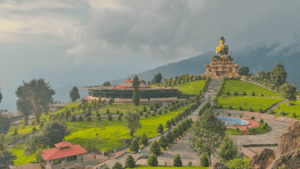Are you looking for a truly unique gateway experience? India is a land of rich cultural heritage, crowned with magnificent temples that showcase its deep-rooted spirituality and architectural brilliance. If so, then you need to check out these 10 hidden temples in India!
In this blog post, we will explore 10 of the most amazing hidden temples in India. These temples are located all over the country, from the bustling cities of Mumbai and Delhi to the remote villages of Rajasthan and Himachal Pradesh. They are all rich in history and culture, and they offer a unique glimpse into the diverse religious traditions of India.
10 Hidden Temples in India
These hidden temples in India offer unique experiences and are worth exploring for their cultural and spiritual significance.
1. The Sun Temple of Konark
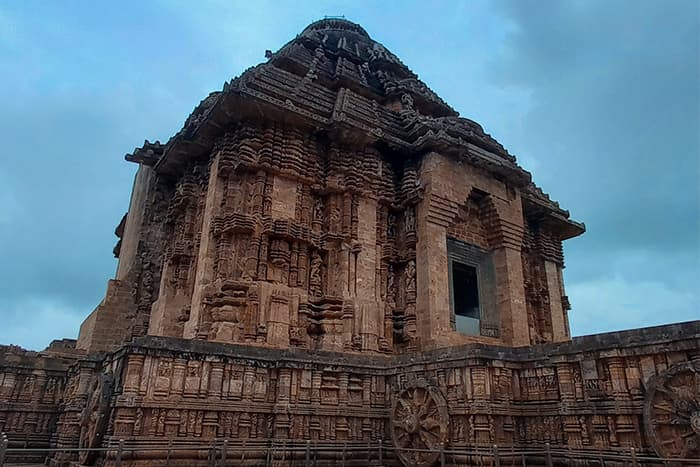
The Sun Temple of Konark is a remarkable ancient temple in India. It’s not an ordinary temple; it’s extraordinary for several reasons.
History: This temple was built in the 13th century by King Narasimhadeva I. It’s dedicated to the Sun God, Surya. Imagine, people more than 700 years ago built this magnificent structure.
Unique Features: What sets it apart is its architectural brilliance. It’s shaped like a colossal chariot with 12 massive stone wheels, representing the Sun God’s chariot. These wheels work like sundials, casting shadows that tell time accurately.
The temple is designed in such a way that every day, the first rays of the rising sun illuminate the main sanctum. It’s like a natural alarm clock set by ancient architects.
So, when you visit the Sun Temple of Konark, you’re not just seeing a temple; you’re witnessing an engineering marvel that connects you to the past in an incredibly unique way. Konark is one of the hidden temples in India.
- Best Time to Visit: The months of October to February offer pleasant weather, making it ideal for exploration.
- Other Things to Do: Don’t miss the Chandrabhaga Beach nearby.
- How to Get There: Konark is well-connected by road and is about a 2-hour drive from Bhubaneswar, the capital of Odisha.
- Where to Stay: There are various accommodation options in Konark, ranging from budget guesthouses to mid-range hotels.
2. The Rani Ki Vav
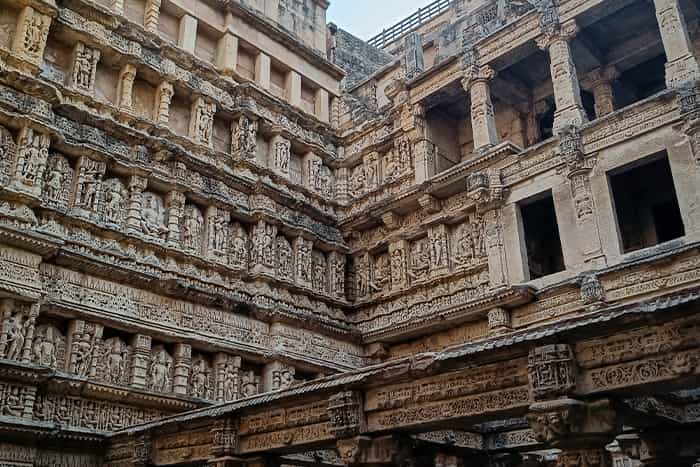
History: Rani Ki Vav, located in Patan, Gujarat, is no ordinary stepwell. This architectural gem was constructed during the 11th century by Queen Udayamati in memory of her husband, King Bhimdev I. It’s a testament to their love and devotion.
Unique Features: What sets Rani Ki Vav apart is its intricate and elaborate design. It’s not just a well; it’s a subterranean wonder. As you descend the steps, you’re greeted by a stunning display of art and architecture. The walls are adorned with over 500 principal sculptures, showcasing Hindu deities, mythological tales, and intricate carvings.
The stepwell was designed not just for practicality but also as a work of art. It’s said that the stepwell was filled with water only during the hot months, acting as a sort of underground summer palace for the queen and her entourage.
So, when you visit Rani Ki Vav, you’re not just exploring a stepwell; you’re delving into a hidden world of art and history, a testament to the creativity and craftsmanship of ancient India. Rani Ki Vav is one of the hidden temples in India.
- Best Time to Visit: Visit between November and February to avoid the scorching heat of the summer months.
- How to Get There: Patan, where Rani Ki Vav is located, is easily accessible by road from major cities in Gujarat.
- Where to Stay: Patan has limited stay options, but nearby cities like Ahmedabad offer a wider range of accommodations.
- Other Things to Do: Explore the ancient town of Patan, known for its weaving traditions and historical significance.
3. The Hoysaleswara Temple
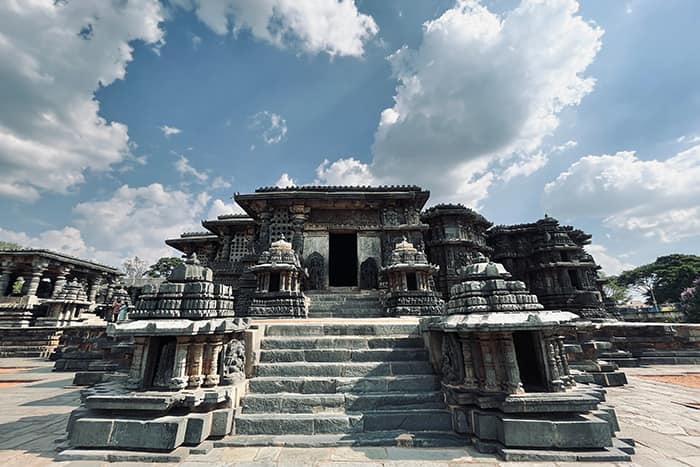
The Hoysaleswara Temple is located in Karnataka, India.
History: Built during the 12th century by King Vishnuvardhana of the Hoysala Empire, this temple stands as a testament to the grandeur of that era. It was dedicated to Lord Shiva and Lord Vishnu. The temple took over a century to complete, a true labor of devotion.
What Makes it Different: What truly sets the Hoysaleswara Temple apart is its intricate stone carvings. Every inch of this temple is adorned with stunning, detailed sculptures. Unlike many temples of its time, which mainly depicted gods and goddesses, this temple’s carvings tell stories from Hindu epics, daily life, and even scenes from ancient battles.
Moreover, it boasts two shrines, one for Shiva and one for Vishnu, connected by a shared platform, showcasing the harmony of different faiths. The temple’s star-shaped platform and architecture display a blend of Hoysala and Chalukya styles, making it a unique masterpiece. The Housaleswara is one of the hidden temples in India.
- Best Time to Visit: October to March offers a pleasant climate for exploration.
- How to Get There: Halebidu, where the temple is located, is well-connected by road.
- Where to Stay: You can find accommodation options in Halebidu and nearby Hassan.
- Other Things to Do: Visit the Kedareshwara Temple and explore the nearby archaeological museum.
4. The Khajuraho Temples
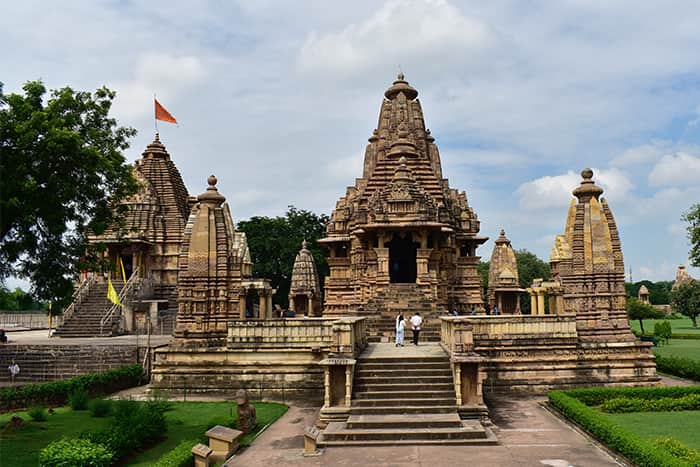
The Khajuraho Temple is located in Madhya Pradesh, India.
History: Constructed during the Chandela dynasty’s rule, primarily between the 9th and 11th centuries, these temples were dedicated to various Hindu deities like Shiva, Vishnu, and Devi. They were built in a relatively short span, suggesting the remarkable architectural and artistic prowess of that era.
What Makes them Different: What sets the Khajuraho Temples apart is their exquisite, detailed sculptures. These temples are famous for their erotic art, which forms a small portion of the total carvings but often captures the most attention. However, these sculptures are not mere erotica; they depict various aspects of life, including dance, music, love, and daily routines, providing insight into the society and culture of the time.
Architecturally, the temples are known for their intricate design and symmetry. They are divided into three groups – Western, Eastern, and Southern – each with its unique style. The Western Group, in particular, is famous for its large and most well-preserved temples, like Kandariya Mahadeva Temple and Lakshmana Temple. The Khajuraho temple is one of the hidden temples in India.
- Best Time to Visit: October to February is the most pleasant exploring time.
- How to Get There: Khajuraho has its airport and is well-connected by road and rail.
- Where to Stay: There are several accommodation options in Khajuraho ranging from budget to luxury.
- Other Things to Do: Explore the nearby Panna National Park for wildlife enthusiasts.
5. The Mahabodhi Temple
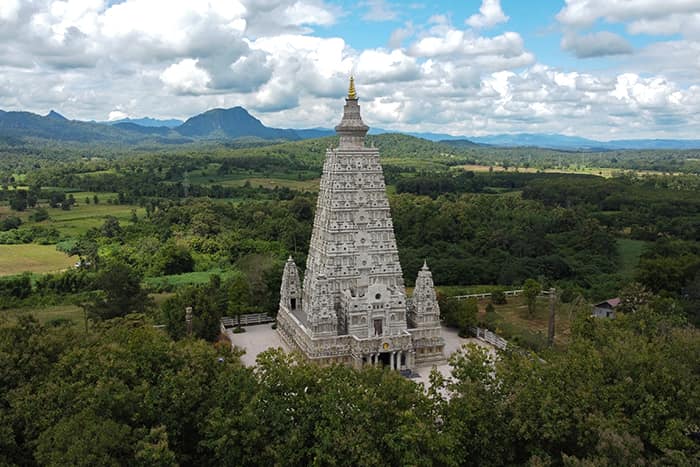
The Mahabodhi Temple is located in Bodh Gaya, India.
History: This sacred temple has a history that dates back over two millennia. It is said to be the very spot where Siddhartha Gautama, the Buddha, attained enlightenment under the Bodhi tree in approximately 500 BCE. The temple, as it stands today, was originally constructed by Emperor Ashoka in the 3rd century BCE to commemorate this momentous event. Over the centuries, it has undergone several renovations and additions, making it a blend of different architectural styles and historical periods.
What Makes it Different: What makes the Mahabodhi Temple unique is its status as one of the most important pilgrimage sites for Buddhists worldwide. The temple is not just a physical structure; it represents the spiritual awakening of the Buddha. Pilgrims from all over the globe visit this site to pay their respects and meditate under the Bodhi tree, which is believed to be a direct descendant of the original tree.
The temple’s architectural style, characterized by its tall tower, intricate carvings, and red sandstone construction, showcases a blend of Indian, Burmese, and Chinese influences. Its UNESCO World Heritage status underscores its cultural and historical importance. The Mahabodhi Temple is one of the hidden temples in India.
- Best Time to Visit: October to March is the ideal time for a visit.
- How to Get There: Bodh Gaya is well-connected by road, rail, and air.
- Where to Stay: Accommodation options range from guesthouses to hotels in Bodh Gaya.
- Other Things to Do: Explore the Bodhi Tree, visit the Great Buddha Statue, and meditate at the temple premises.
6. The Brihadeeswarar Temple
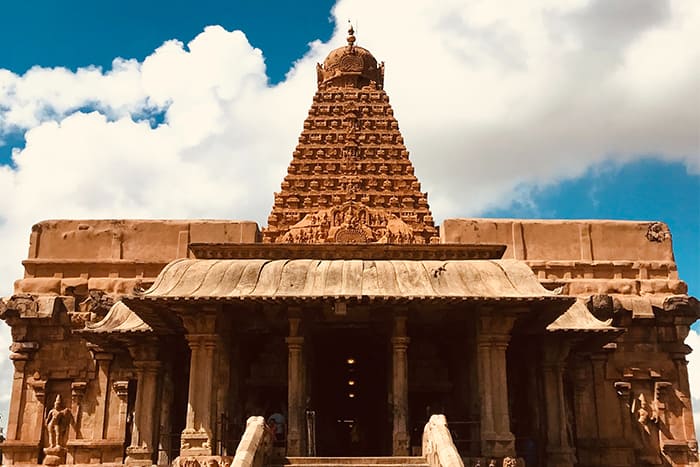
The Brihadeeswarar Temple is located in Thanjavur, Tamil Nadu, India.
History: Built during the Chola dynasty’s reign, specifically by Emperor Raja Raja I in the 11th century, this temple is a testament to the Chola’s architectural prowess and devotion. It was constructed to honor Lord Shiva and is renowned for its immense size and architectural brilliance.
What Makes it Different: What sets the Brihadeeswarar Temple apart is its towering vimana (temple tower), which soars to a staggering height. This remarkable feat of architecture was achieved without the use of any bonding materials, showcasing the engineering genius of its builders. The temple also houses one of the largest Nandi (bull) statues in India, carved from a single rock.
Its walls are adorned with intricate carvings and frescoes that depict various aspects of Hindu mythology, daily life during the Chola period, and the temple’s history. The temple’s sanctum sanctorum houses a massive lingam (representation of Lord Shiva) that draws pilgrims and tourists from around the world. The Brihadeeswarar Temple is also one of the hidden temples in India.
- Best Time to Visit: October to March is the best time to experience the temple’s grandeur.
- How to Get There: The temple is located in Thanjavur, accessible by road and rail.
- Where to Stay: Accommodation options are available in Thanjavur.
- Other Things to Do: Explore the Thanjavur Royal Palace and the Saraswathi Mahal Library.
7. The Lepakshi Temple
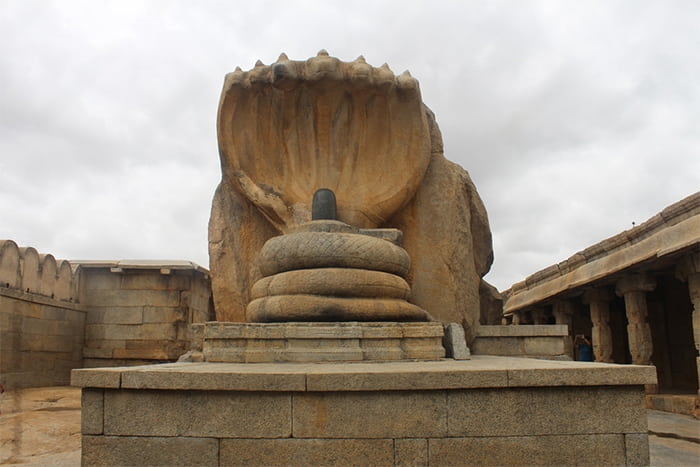
The Lepakshi Temple is situated in the town of Lepakshi in Andhra Pradesh, India.
History: This temple dates back to the 16th century and was built during the Vijayanagara Empire’s rule. It is dedicated to Lord Veerabhadra, a fierce form of Lord Shiva. The temple complex also features shrines dedicated to Lord Vishnu and Lord Brahma.
What Makes it Different: What distinguishes the Lepakshi Temple is its exceptional architecture and intricate craftsmanship. The temple is famous for its massive granite pillars, each intricately carved with detailed motifs and stories from Hindu mythology. One of the most renowned pillars, the “Hanging Pillar,” appears to defy gravity, as it does not touch the ground completely.
The temple’s ceiling is adorned with vibrant and beautifully preserved frescoes depicting various mythological tales. Notably, the painting of the “Divine Couple” (Lord Shiva and Goddess Parvati) is a masterpiece of art. The Lepakshi Temple is also one of the hidden temples in India.
- Best Time to Visit: November to February offers pleasant weather for exploration.
- How to Get There: Lepakshi is accessible by road and is approximately 120 kilometers from Bangalore.
- Where to Stay: Accommodation options can be found in nearby towns.
- Other Things to Do: Visit the Veerabhadra Temple and explore the Lepakshi Handicrafts Emporium.
8. The Jagannath Temple
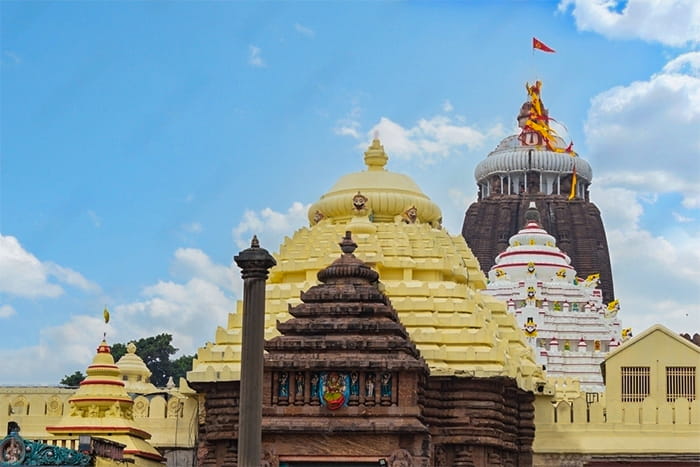
The Jagannath Temple is located in Puri, Odisha, India.
History: The history of the Jagannath Temple dates back over a thousand years. The original temple was constructed in the 12th century by King Anantavarman Chodaganga Deva. It has since undergone multiple renovations and additions, making it a blend of different architectural styles and historical periods.
What Makes it Different: What makes the Jagannath Temple distinct is its unique deity, Lord Jagannath, whose idols are made of wood and replaced every twelve years. This practice symbolizes the cycle of life, death, and rebirth.
The annual Rath Yatra, during which the deities are placed on colossal chariots and pulled through the streets by thousands of devotees, is one of the most famous religious processions in the world. It attracts millions of pilgrims and tourists from all over India and beyond.
The temple’s architecture is also noteworthy, featuring a towering shikhara (spire) and intricately carved stone sculptures depicting various gods, goddesses, and mythological scenes. The Jagannath temple is also one of the hidden temples in India.
- Best Time to Visit: The winter months of October to February are pleasant for a visit.
- How to Get There: Puri is well-connected by road and rail.
- Where to Stay: Accommodation options range from budget to luxury in Puri.
- Other Things to Do: Relax on Puri Beach and explore the bustling local markets.
9. The Somnath Temple
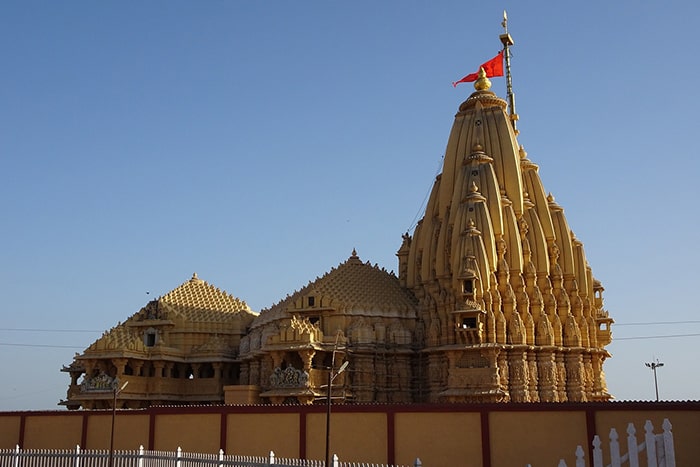
The Somnath Temple is located in the state of Gujarat, India.
History: The history of the Somnath Temple is both ancient and tumultuous. It is believed to have been originally built in ancient times, with references to its existence dating back thousands of years in Hindu texts. However, the temple has faced destruction and reconstruction multiple times due to various historical invasions.
One of the most well-known incidents in its history is its destruction by Mahmud of Ghazni in the 11th century. Despite facing numerous setbacks, the temple has been rebuilt and restored by different rulers and dynasties over the centuries, signifying its resilience and the enduring devotion of its followers.
What Makes it Different: The Somnath Temple is often referred to as “The Eternal Shrine” due to its remarkable history of reconstruction after destruction. Its current form, built in the Chaulukya style of architecture in the 1950s, is a beautiful and serene structure facing the Arabian Sea.
The temple’s location along the coast adds to its charm and spiritual significance, with devotees often taking holy dips in the sea before visiting the temple.
Visitors are also drawn to the temple’s peaceful ambiance and the opportunity to witness the Aarti (prayer ceremony) and other rituals, which are performed with great devotion. The Somnath temple is also one of the hidden temples in India.
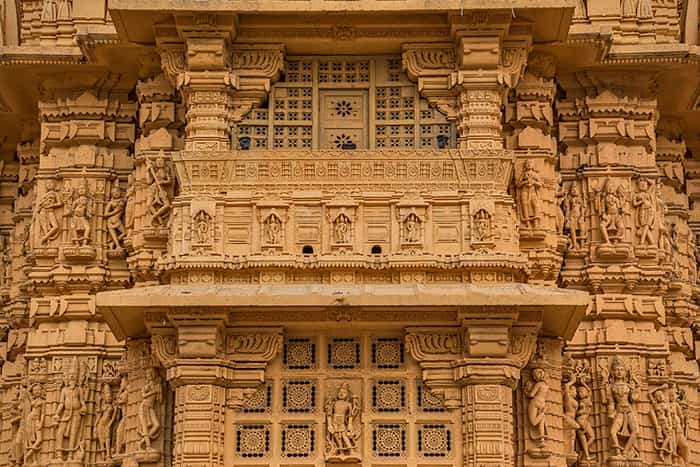
- Best Time to Visit: October to February is the ideal time for a visit.
- How to Get There: Somnath is well-connected by road and rail.
- Where to Stay: Accommodation options are available in Somnath and nearby towns.
- Other Things to Do: Enjoy the serene beach and witness the evening aarti at the temple.
10. The Jain Temples of Dilwara
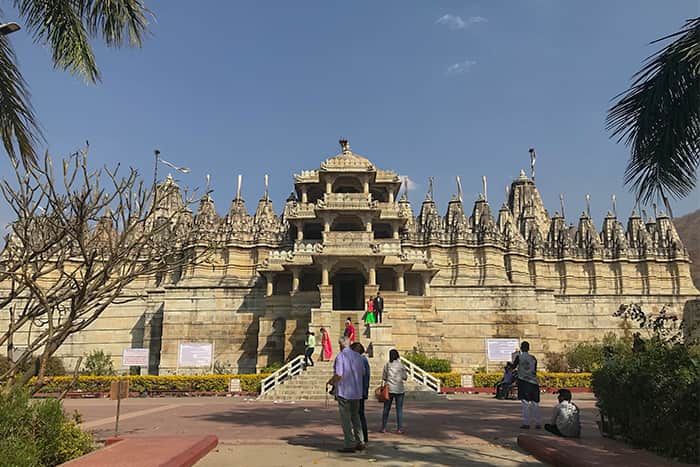
The Jain Temples of Dilwara, as well as a few hidden temples in India, are located near Mount Abu in Rajasthan, India.
History: These temples were constructed between the 11th and 13th centuries. They were funded by wealthy Jain merchants and were created by skilled artisans. These temples are dedicated to various Jain Tirthankaras (spiritual teachers), and they showcase the rich cultural heritage of the Jain community.
What Makes them Different: What sets the Jain Temples of Dilwara apart is their extraordinary craftsmanship. The temples are renowned for their intricate marble carvings, which are considered some of the most exquisite examples of marble art in India. The marble used here is of exceptional quality and was transported from a great distance.
Each temple within the complex has a unique architectural style, but they all share a common theme of extraordinary detailing. The ornate ceilings, intricately carved doorways, and beautifully designed pillars are a testament to the artistry of their creators.
Furthermore, these temples adhere to the principles of Jainism, which include non-violence (ahimsa) and truth (Satya). This is reflected in the temple’s serene atmosphere and the vegetarian-only policy maintained within the temple premises.
- Best Time to Visit: November to February offers a pleasant climate for exploration.
- How to Get There: Mount Abu is well-connected by road.
- Where to Stay: Accommodation options are available in Mount Abu.
- Other Things to Do: Explore Nakki Lake and enjoy panoramic views from the Guru Shikhar peak.

